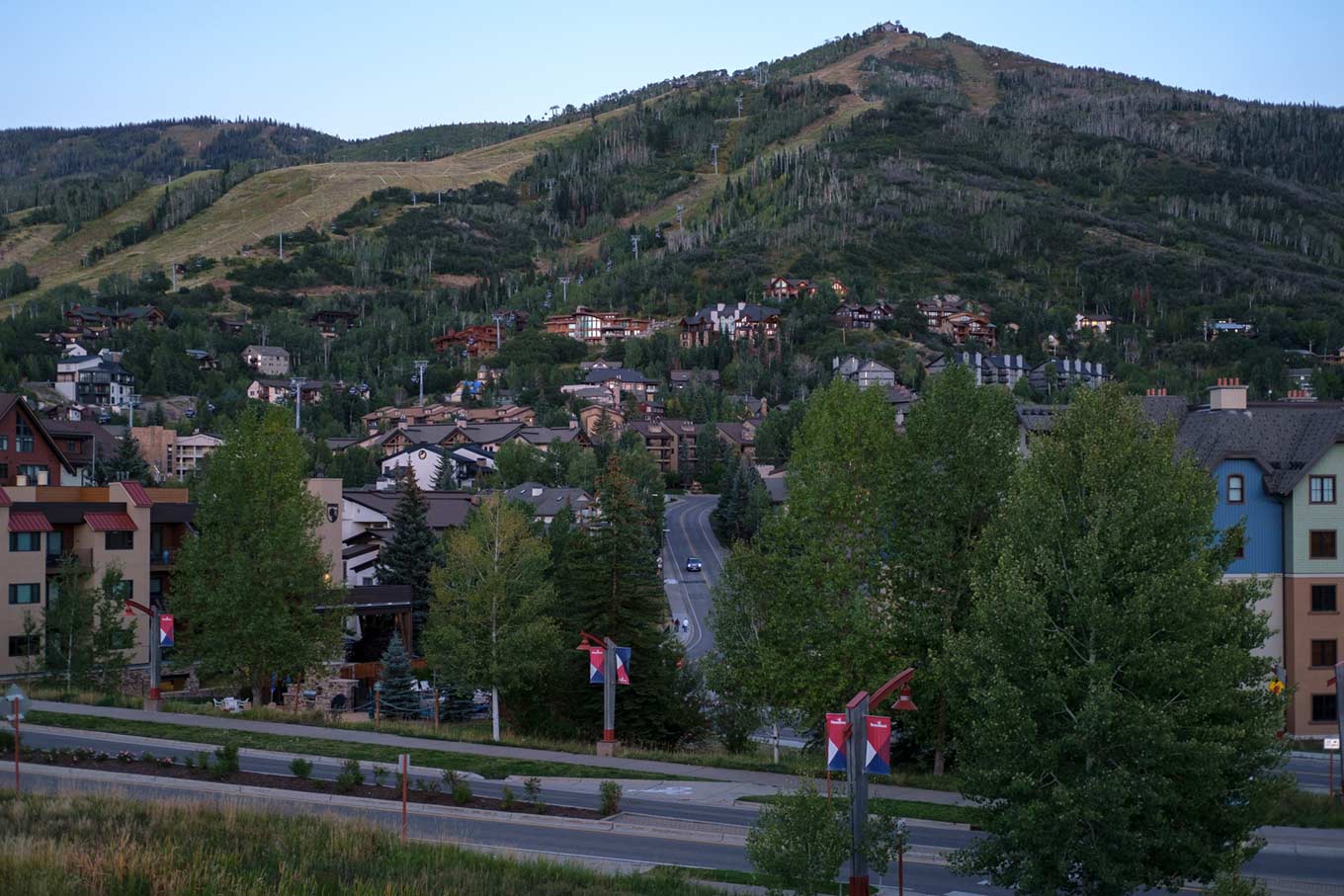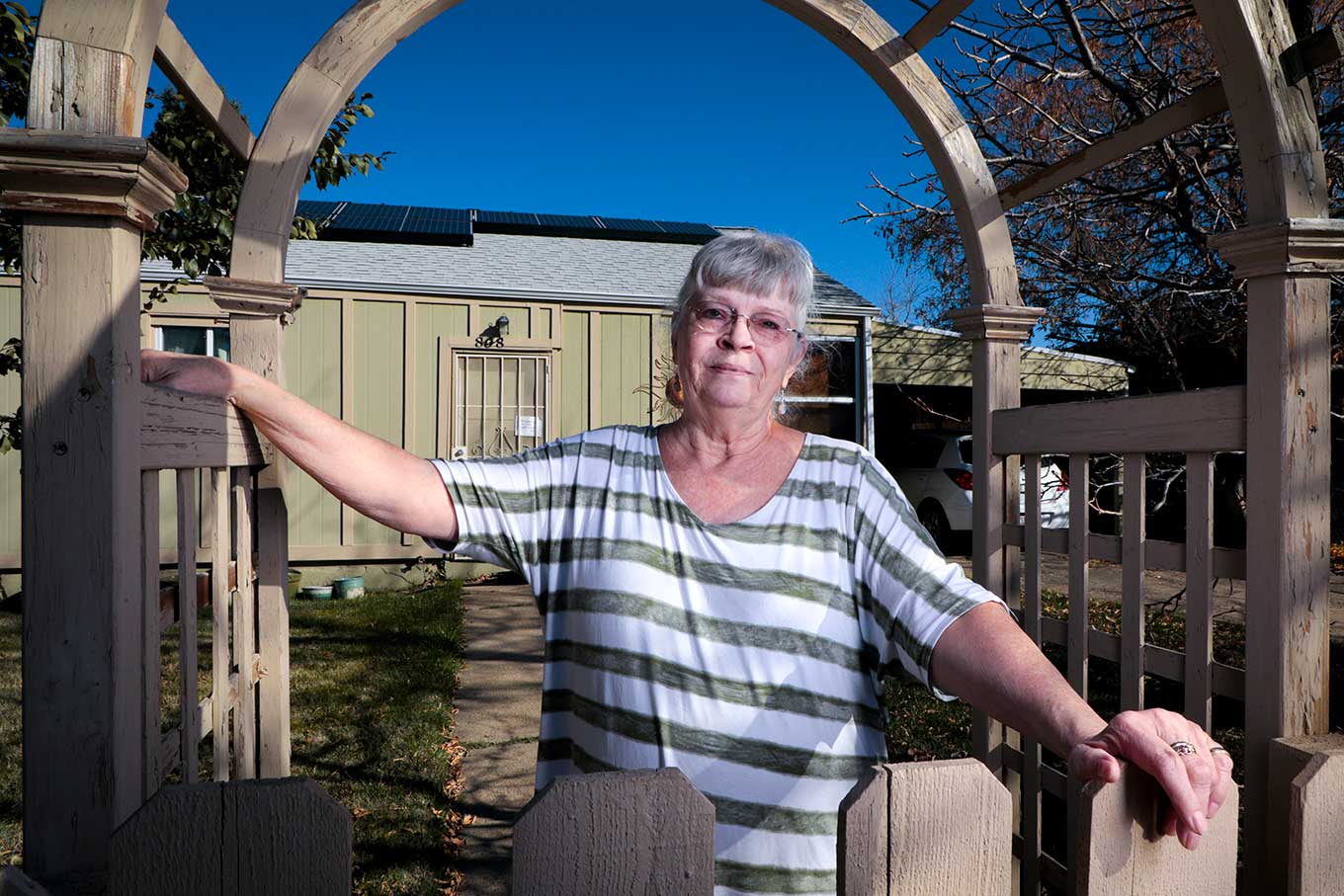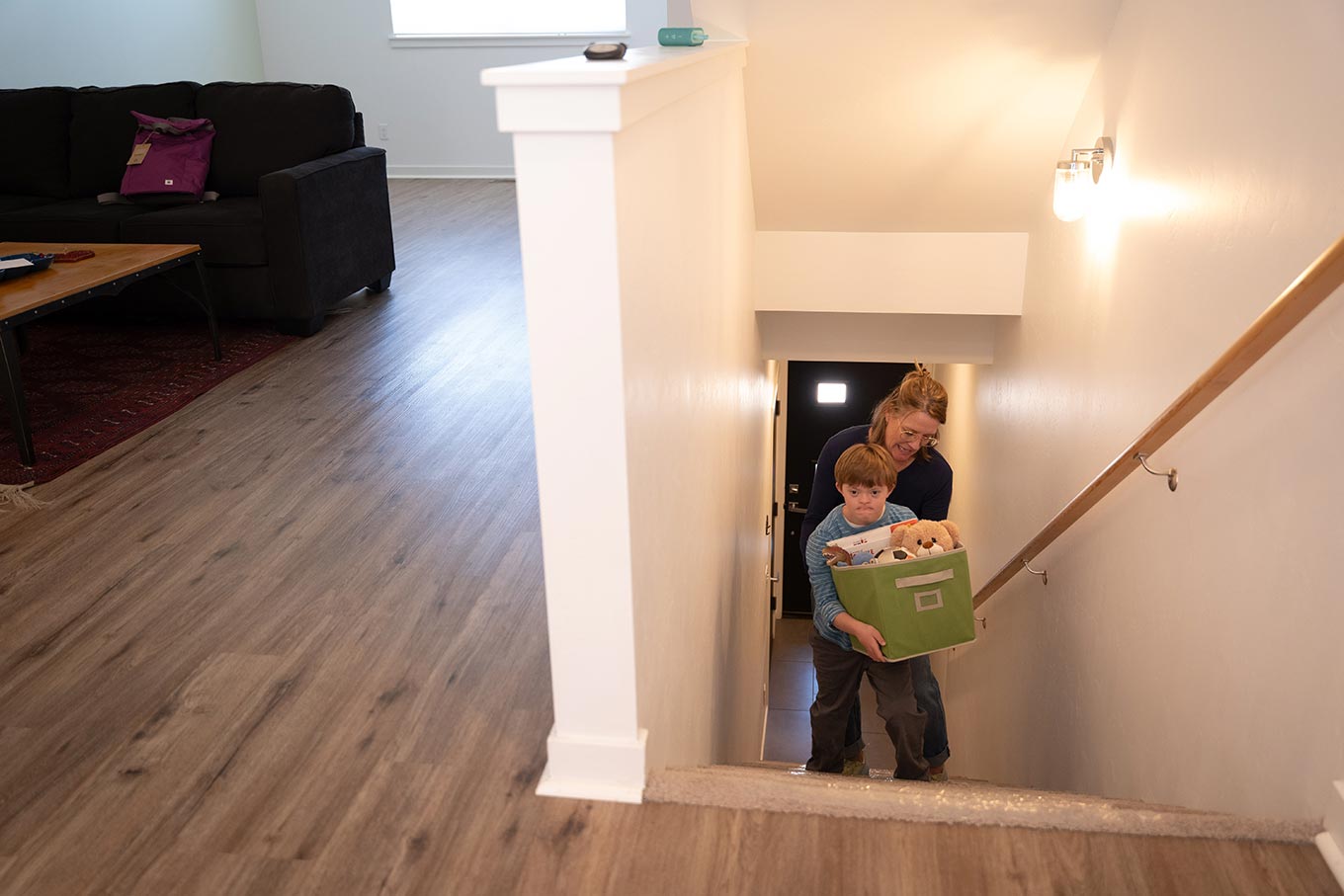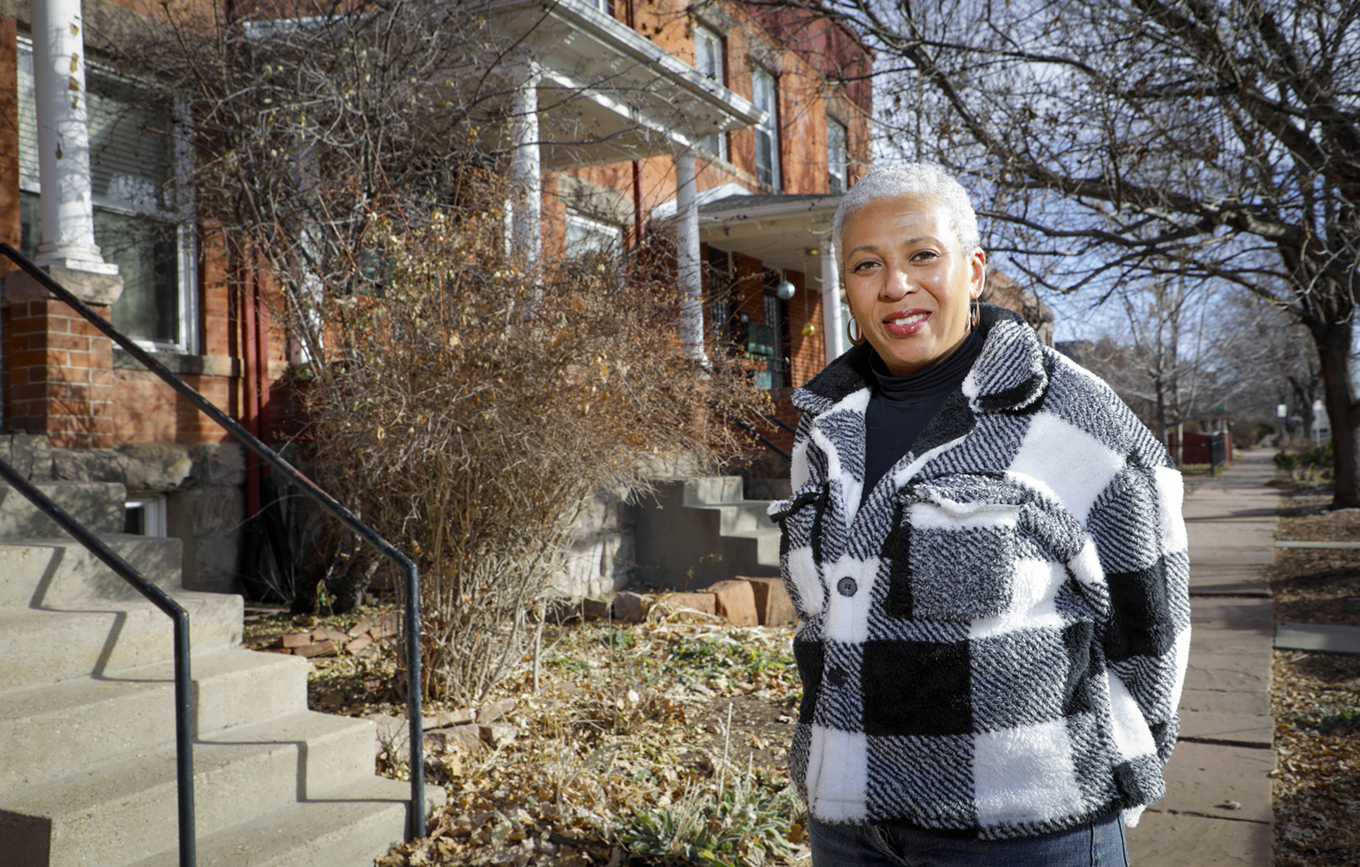When Bonnie Hernandez and her husband Roberto sold their home in Denver and moved to Steamboat Springs in 2022 with their 1-year-old daughter, it fulfilled a long-held dream of living in the mountains and escaping long commutes to work.
Bonnie Hernandez had a new job at a private foundation serving youth and families, and soon after moving, her husband found a job with a local nonprofit. Even then, it was hard to find affordable housing, but people reassured them that the market would come down eventually; it always had, they said.
The Hernandezes ended up renting a three-bedroom house for two years. When their lease came up for renewal earlier this year, they asked their landlord for a few weeks to decide while they explored whether it would be possible for them to purchase a property. In the meantime, their landlord showed the house to other potential tenants. When Bonnie and her husband opted to continue renting, their landlord informed them that others were willing to pay upwards of $1,500 more per month and decided not to renew their lease.
They searched for a new place for months, but rents and home prices had nearly doubled in the previous two years. The Hernandezes, who considered themselves solidly upper-middle class, were shocked to find that their options were slim to none.
“We would be paying six or seven grand [per month] to live in something that’s subpar or maybe has mold,” Bonnie Hernandez said.
Their one source of hope was an ambitious new affordable housing proposal created by the Yampa Valley Housing Authority, Steamboat’s affordable housing organization. Thanks to an anonymous $24 million donation in 2021, the housing authority purchased a 536-acre property on the west side of Steamboat, known as Brown Ranch, to build long-term subsidized housing for people who work in Steamboat Springs.
It was a golden ticket most Colorado mountain towns could only dream about, sidestepping the high cost of land in such communities that prevents large-scale affordable housing development. Instead, the project ignited fierce criticism—many locals said it was too big, would increase traffic and cost too much.
The Hernandezes were just under the household income threshold of $268,000 (250% of the area median income) to qualify for the new housing. They also figured it would open up more inventory in the town and eventually, rental and housing prices might level off. But in March, the Brown Ranch proposal failed in a public vote to annex the land into the City of Steamboat Springs after a group of residents forced the issue to a special referendum.
The defeat ultimately ended the Hernandezes’ hopes of staying in Steamboat and raised more significant, unresolved questions about Steamboat’s future. Who gets to live in Colorado’s idyllic mountain towns? And is current residents’ access to convenience and privilege worth more than others?

Construction work occurs for a new housing development, just outside of Brown Ranch, on Wednesday, Sept. 18, 2024, in Steamboat Springs, Colo. A proposal to build a large-scale project of affordable housing units at Brown Ranch failed a public vote in March. Photo by Eli Imadali / Special to The Colorado Trust
There is a sentiment among many living in Steamboat that it’s always been a working-class town that happens to have a ski resort—that it’s “not an Aspen,” said Robin Schepper, a Steamboat resident of 12 years, referring to the infamously pricey resort town three hours south where an estimated 120 billionaires own homes.
But after failing to address its worsening housing issues for decades, it’s getting harder and harder for Steamboat to make that case anymore.
On June 17, a small plane crashed into the West Acres mobile home park on the outskirts of Steamboat. Jerry Hernandez (no relation to Bonnie and Roberto Hernandez) saw the aftermath of the tragedy as a sad reflection of the housing crisis in his adopted home. Hernandez is the executive director of Integrated Community, a nonprofit supporting the local immigrant population. In a town where the average single-family house sells for $1.2 million at nearly $1,000 per square foot of space, West Acres is one of the last vestiges of affordable housing for many of the community’s local workforce.
Beyond the tragedy of the two people who lost their lives, Hernandez said finding a place to temporarily house the people whose homes were destroyed in the plane crash was a nightmare. It was the beginning of summer—peak tourist season—and local hotels and motels had almost no vacancies. The long-term situation looked even more dire. The monthly rent for a one-bedroom apartment in Steamboat Springs, in Routt County, is now over $2,300.
“The idea that someone could just go live in an apartment complex—good luck with that,” Hernandez said.
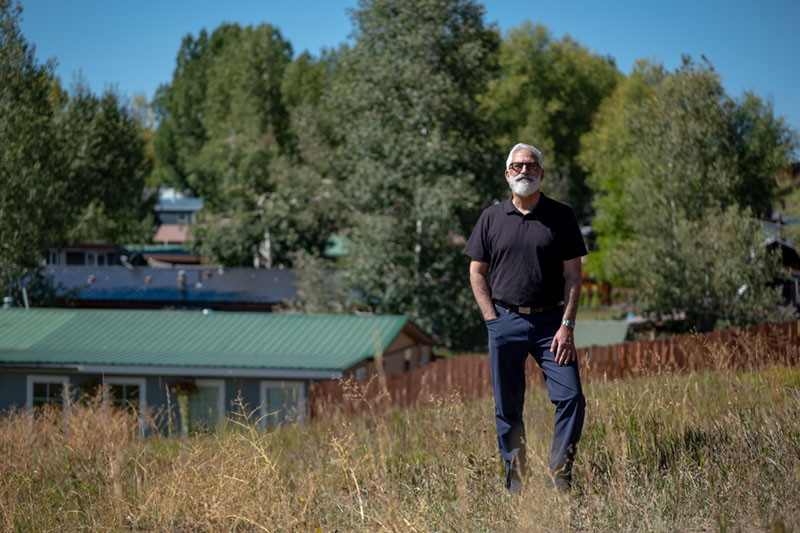
Jerry Hernandez, executive director of Integrated Community, poses for a portrait on Wednesday, Sept. 18, 2024, at the West Acres Trailer Court, a mobile home park, in Steamboat Springs, Colo. Mobile home parks are some of the few remaining affordable places to live in the town. Photo by Eli Imadali / Special to The Colorado Trust
Hernandez has heard stories of eight people living in two-bedroom trailers, others paying $800 a month to sleep in a hallway and others spending $600-$700 to sleep on a cot in an apartment’s laundry room. Every summer, workers camp on the public land along Buffalo Pass north of town because they can’t afford anything else. Even some of Steamboat’s middle- and upper-class residents are being squeezed out of the market, getting outbid on million-dollar homes by out-of-town buyers willing to pay in cash.
For the Hernandezes, the broader implications of living in a locale where so many crucial middle-class community members—teachers, firefighters, police officers and others—could not afford to live long-term began to add up.
“If we take a huge financial hit and try to stay here,” Bonnie Hernandez wondered, “what’s the context in which we’re going to be living?”

Chris Genereux enjoys a campfire while living and camping out of his car on Wednesday, Sept. 18, 2024, outside Steamboat Springs, Colo. Genereux, an avid camper who has been on the road camping for seven years, has recently wanted to settle down in the area due to medical conditions, but he hasn’t found something affordable yet. Photo by Eli Imadali / Special to The Colorado Trust
According to Jason Peasley, the executive director of the Yampa Valley Housing Authority, Steamboat’s current housing crisis is decades in the making. There was a big push in the early 2000s to build affordable housing that largely fizzled out in 2008 with the Great Recession—a time when, he said, many people thought Steamboat didn’t have a housing problem anymore.
“I remember just being like, yeah, it’s not going to stay like this forever,” Peasley said.
Fast-forward to 2016, and Steamboat Springs could no longer ignore the issue. Like many other cities and towns in Colorado, Steamboat Springs had not kept pace with building homes for a rapidly growing population.
“Housing supply is not keeping up with demand, leading to rapidly increasing home prices and rental rates,” reads a 2016 report from the Routt County Community Housing Steering Committee. It noted that rising home prices and rental rates will price out many local workers from Steamboat, leading to a loss of community character and economic competitiveness.
There’s also a growing gap between local wages and home prices, said Clark Anderson, the co-founder and executive director of Community Builders, a Colorado-based nonprofit that helps communities in the western U.S. tackle economic and social challenges. A pandemic-fueled real-estate boom driven by remote workers, second (or even third and fourth) home buyers and short-term rental investors has caused home prices in Colorado to nearly double, squeezing the middle- and lower-income housing market, Anderson said.
Meanwhile, the economic conditions that have created Steamboat’s housing crisis are only growing more pronounced. The coal-powered Hayden Generating Station and the Tri-State Generation and Transmission plants in Craig, 42 miles west of Steamboat, are closing in 2028, concentrating regional jobs and economic activity even more in Steamboat at a time when fewer workers can afford to live there. Almost 60% of the town’s workforce (More than 5,400 workers, per Census data analyzed by the Steamboat Springs City Council in 2019) now commutes from surrounding municipalities like Craig, Hayden, Phippsburg, Oak Creek and Yampa, overwhelming some of the county roads and creating increased traffic in and out of Steamboat.
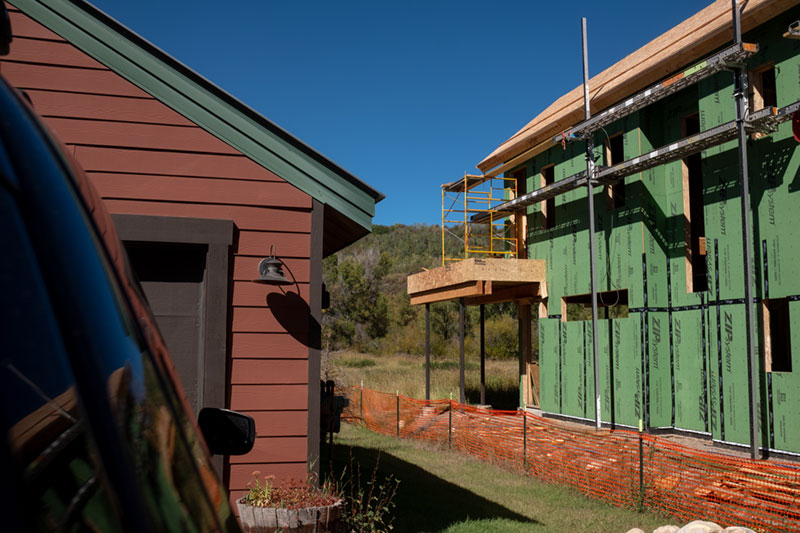
A multimillion dollar home is constructed next to a more modest home as shown in this photo from Wednesday, Sept. 18, 2024, in Steamboat Springs, Colo. Photo by Eli Imadali / Special to The Colorado Trust
In search of solutions, the Yampa Valley Housing Authority led a community engagement process in 2016 to, as Peasley put it, “break out of the cycle” of Steamboat’s legacy of failed affordable housing initiatives.
At the time, the housing authority had just started developing new housing projects to boost supply. In 2017, Steamboat voters approved a mill levy to help fund new affordable housing, which has been used to build three developments since 2018 (with a fourth currently under construction). The housing authority will have built 521 affordable units, said Peasley—but Steamboat still needs 1,400 more.
According to Peasley, that progress was partly why the Yampa Valley Housing Authority received the anonymous donation in 2021 to buy the Brown Ranch property—a recognition that the organization could “get it done.” That proved to be valid for a while, Peasley said. Housing authority staff envisioned building an entire neighborhood with a mix of housing types to rent or buy, from apartments and townhomes to detached single-family homes. The development would be 100% affordable via a deed restriction limiting their market values and facilitating affordable resale.
Two years later, the housing authority released the final annexation plan for Brown Ranch, which runs contiguously to city limits to the northwest. The plan called for a phased development that would ultimately build 2,264 residences over 20 years—roughly 100 homes per year—requiring the residents to work in Routt County. It was the most significant affordable housing initiative in Colorado and one of the largest in the U.S., with only several major cities building larger developments.
Crucially, said Peasley, Brown Ranch residents would have a range of incomes to help pay for the development, from service workers to health care professionals. Additional revenue came from the tax on short-term rentals that voters approved in 2022 and again in 2023, dedicating 75% of the tax to help fund the Brown Ranch project.
However, the Brown Ranch plan was contingent on the property’s annexation into Steamboat Springs, which would involve the city paying for water, sewer lines and other critical infrastructure. The annexation proposal was the pivotal moment for Brown Ranch—the point at which everything started unraveling.
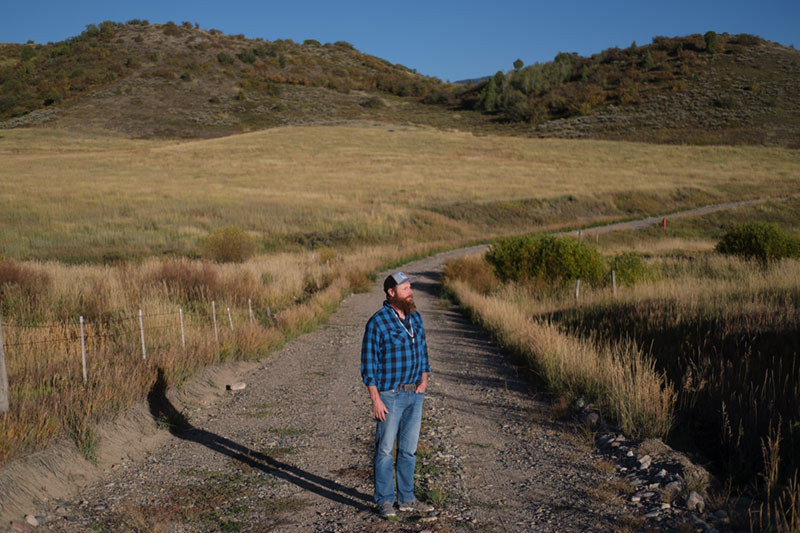
Jason Peasley, executive director of the Yampa Valley Housing Authority, poses for a portrait on Wednesday, Sept. 18, 2024, on the 536-acre Brown Ranch, where the nonprofit purchased property and would have built subsidized housing, had the proposal to annex into Steamboat Springs, Colo. not been rejected. Photo by Eli Imadali / Special to The Colorado Trust
Former Steamboat Springs councilman Jim Engelken moved to Steamboat in 1979 and, except for a two-year stint in Golden, has lived there ever since. He and his wife, Nancy, insist that while they opposed the Brown Ranch plan as proposed, they have always been champions of affordable housing initiatives. Nancy Engelken is the former affordable housing coordinator for the City of Steamboat Springs. During his time on the council, Jim Engelken pushed for an excise tax on new home construction and supported a 30% inclusionary zoning mandate in the late 1990s as part of the West Steamboat Area Plan. Voters ultimately rejected both initiatives.
When Jim Engelken heard the housing authority’s pitch for Brown Ranch at an October 2023 meeting, he was immediately skeptical about the costs such a significant development would impose on Steamboat Springs’ municipal infrastructure.
“What are you going to do to mitigate those problems? And No. 1, how are you going to pay for it?” Engelken said.
Funding remains the couple’s chief concern. The revenues generated for the project and the city’s estimate of grants awarded still left the city with a projected $52 million funding shortfall. A report from city staff noted “serious concerns” about proceeding with the annexation based on the current understanding of the city’s share of capital infrastructure costs and revenues.
Other opponents raised additional concerns. In a survey sent by the Steamboat Springs Chamber asking whether the city should annex the Brown Ranch property, some respondents worried the project would “change the character” of Steamboat or “destroy the town as we know it.”
The Engelkens noted that there were too many high-density apartments and not enough townhomes and single-family homes available for purchase at subsidized and market rates.
“There was a segregation aspect to it,” Nancy Engelken said, referring to her perception that Brown Ranch would look and feel like a community separate from the rest of Steamboat.
She also had concerns about the private New Jersey real estate firm, The Michaels Organization, that would own 80% of the Brown Ranch development. The Michaels Organization is one of the largest affordable housing developers in the country, so while it would not be strange for the housing authority to select it, the Engelkens felt a Colorado-based firm should have been chosen instead. (In June, the developer’s CEO was indicted in New Jersey on racketeering charges, and the housing authority cut ties with the firm less than two weeks later.)
Then there was the size of the proposed development itself. Brown Ranch would add 6,000 people over 20 years to a community of 13,300—a 45% increase. For the Engelkens and other critics of the project, it was simply too much, too fast.
With an annexation agreement in the works that would bring the Brown Ranch land into the city and signal a green light for construction to begin, the Engelkens and four other residents started a campaign to halt the annexation. (The Engelkens maintain that they still favor some sort of affordable housing development on the Brown Ranch property.) Their website, “Steamboat Citizens for a Better Plan,” had links to critical op-eds in the local papers deeming the project “fiscally dangerous,” unfavorable snippets from public meetings, and factoids like the city’s $52 million shortfall in infrastructure obligations and suggestions that there might be additional taxes. (In Colorado, any new tax or increase of an existing tax requires a public vote.)
More troubling were the racist elements that began surfacing around the anti-Brown Ranch campaign. Peasley and Schepper said that bumper stickers with the slogan “Don’t Turn Steamboat Brown” began circulating in town—a thinly veiled double innuendo. (The Engelkens strongly condemned the racism associated with the anti-annexation campaign.)
When the city council approved the annexation in October 2023, the Engelkens spearheaded a Facebook campaign to gather enough signatures and force the decision to a public vote. In March, the anti-annexation campaign won that vote, 2,903 to 2,094. Brown Ranch was over—at least for now.

Former Steamboat City Councilman Jim Engelken poses for a portrait in his home on Wednesday, Sept. 18, 2024, in Steamboat Springs, Colo. Engelken was a vocal opponent of the housing authority’s proposed project to build affordable housing at the Brown Ranch property. Photo by Eli Imadali / Special to The Colorado Trust
The defeat frustrated Peasley. An urban planner by trade, he is not afraid of significant, transformative change, arguing it’s what the enormity of Colorado’s housing crisis demands. But even he concedes that the scale of the Brown Ranch proposal may have been too large for a majority of Steamboat voters to stomach.
Looking back, he said, the Brown Ranch failure also exposed serious flaws in how Steamboat operates as a municipality. For starters, the lack of a property tax means that Steamboat is not fiscally incentivized to develop housing. In fact, there’s an economic incentive for Steamboat to have its workforce live in other communities because the city doesn’t have to provide the workers with any services while still boosting sales tax revenue when they come to work and spend money locally, Peasley said.
“There was this entire narrative that the people at Brown Ranch were going to cost the city money,” he said, noting that anyone living in town costs Steamboat money in terms of essential services.
Hernandez of Integrated Community believes opponents’ fixation on what Brown Ranch would cost existing Steamboat residents was misplaced. The benefits of living in Steamboat contribute to their home values and include all the amenities that Steamboat offers—a nearby ski resort, restaurants, bars, coffee shops, arts and culture, and health care. These are the same services provided by the people who Brown Ranch opponents said would cost the town too much if they lived there.
That dynamic also meant that many people who would have benefited from the new affordable housing offered by the Brown Ranch couldn’t vote for the annexation because they don’t live in Steamboat; only those with a primary residence in town were eligible to cast a ballot.
Many Steamboat residents who voted in favor of the Brown Ranch annexation were angry about how the debate over the project ultimately played out. Issues like traffic and the lack of parks somehow superseded the whole point of Brown Ranch in the first place: a dire housing crisis.
“Having to wait two more minutes in a traffic jam is not as important as somebody’s ability to find a stable home that they can afford for themselves and their family,” said Laraine Martin, who moved to Steamboat 15 years ago to teach skiing.
Martin now works as executive director of a local cycling and trails advocacy nonprofit and rents an accessory dwelling unit with her fiancée, Andrew Beckler, who founded a local company that makes ski poles. Martin considers herself “in-between” housing insecure and secure. She and Beckler have stable housing for now, but they feel a nagging sense of impossibility regarding their long-term housing prospects, particularly for buying a home.
“You look at the price range and the inventory for what’s around here, and it is completely out of reach,” she said. She and Beckler have begun thinking about moving elsewhere.
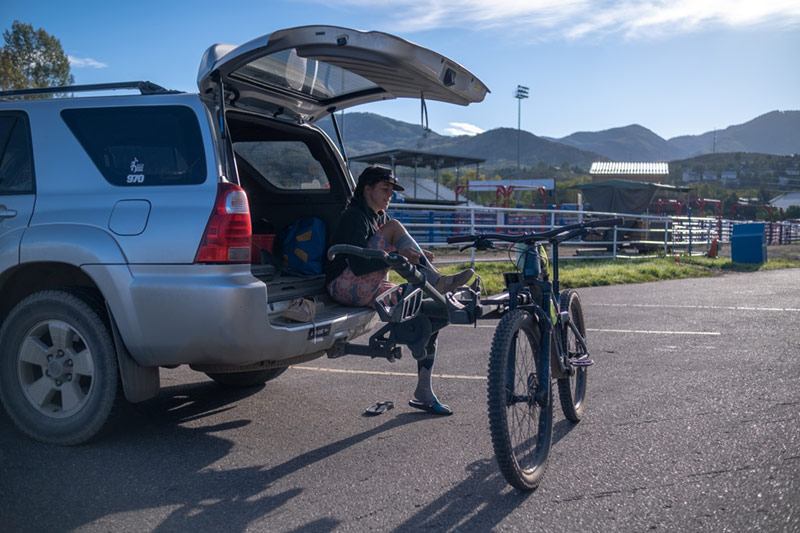
Laraine Martin, a Steamboat Springs resident who moved to the area to teach skiing, gets ready for a morning mountain bike ride on Wednesday, Sept. 18, 2024. Photo by Eli Imadali / Special to The Colorado Trust
To Bonnie and Roberto Hernandez, trying to stay in Steamboat had started feeling like a “survival of the fittest” contest. When the Brown Ranch defeat happened in March, they took it as a sign: It was time to move on from Steamboat. And so, less than three years after moving there, the Hernandezes packed up and left, landing in Fort Collins. They are searching for new jobs.
Peasley hopes that a new affordable housing plan for the Brown Ranch property will eventually be implemented, albeit with some changes.
“We’ll do some more education and take another run at it, but it means a couple-year delay at least,” he said, noting that Steamboat has the land and a dedicated revenue source for the next 20 years that pulls in millions of dollars via the short-term rental tax. “We have the makings of the ability to address all of our housing problems—if we want to.”
“We just have to decide whether that’s exactly what we want,” Peasley added. “I thought that we were there. I really did.”
Note: A photo caption was changed after publication to correct the spelling of Mount Werner. Additionally, the calculation for 250% of the area median income for a three-person household in Steamboat Springs was corrected.
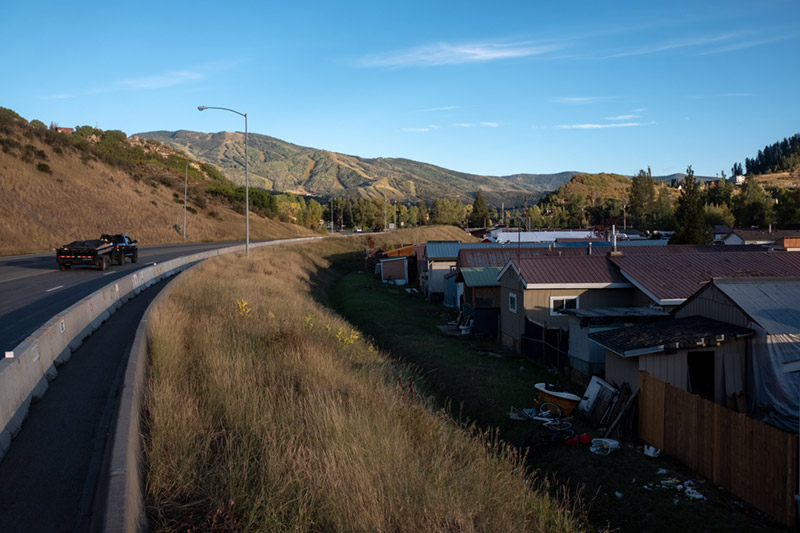
A truck drives past Dream Island, a mobile home park in Steamboat Springs, Colo., on Wednesday, Sept. 18, 2024. Mobile home parks are some of the few affordable places to live in the city. Photo by Eli Imadali / Special to The Colorado Trust
